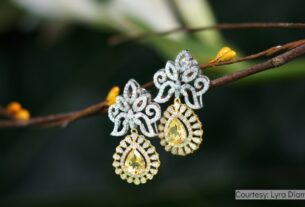Consumers now prefer lab-grown diamonds as they are affordable
Made in 30 days in a chamber, the latest invention in the jewellery industry is lab-grown diamonds.
Diamond merchants are looking to expand their business by selling lab-grown diamonds. Ranjith C, manager at Bhima Jewellers, Malleshwaram said, “Lab-grown diamonds are much cheaper than natural diamonds which attracts consumers towards them.”
Consumers who are aware of lab-grown diamonds have started enquiring about them in jewellery stores. Ranjith further added, “Depending on the consumer demand, most jewellery businesses will also start selling lab-grown diamonds.”
Saianand, a business analyst says, “The diamond industry is a very high capital intensive industry and hence expansion of business might not be for everyone. The big players who have high capital can expand their business by selling both natural and lab-grown diamonds.” He also added, “For smaller diamond merchants, expanding to lab-grown diamonds, by creating a demand for them, might be good, but difficult too.”
A Gems and Jewellery Export Promotion Council report, shows that provisional gross export of polished lab-grown diamonds grew 60.08 percent to Rs. 9743.23 crores in 2022 (till November) as compared to Rs.6086.59 crores during the same period last year.
Increase in exports of lab-grown diamonds in 2022
A changed market
Avni Mehta, promoter and partner of Trilokesh Exports, a Bangalore-based company that exports lab-grown diamonds, said, “We export lab-grown diamonds mainly to the US, but the local demand for these diamonds has also significantly increased in the last two to three years.” She further said that lab-grown diamonds are only one-third the cost of a natural diamond. So, youngsters and students have started wearing them.
Devi, 45 years, a local resident of Bengaluru says that women in her family are usually forced by family members to purchase diamonds for any family function which becomes a huge expense. One simple necklace easily costs around five to six lakhs and people do not get to use it often. Instead, she prefers to get lab-grown diamonds. She said, “I have purchased one lab-grown diamond ring which is a much better option, especially when you have to purchase diamonds just to match societal expectations.”
Diamonds do not have an investment value as they are depreciating assets, unlike gold and silver. But most jewellery stores provide a buy-back policy for diamonds.
Mehta said, “Since diamonds aren’t an investment, people who are aware of lab-grown diamonds, have started questioning why they should spend so much money on it. Similar to natural diamonds, lab-grown diamonds also have a 70-80 per cent buyback policy and the Goods and Services Tax (GST) percent on the purchase is similar to natural diamonds.”
She added that in Trilokesh Export’s Business to Business model (B2B), they are already selling their products to many natural diamond merchants and big brands that are all looking to expand their market, by selling lab-grown diamonds, alongside natural diamonds
Budgets and value
Dheeraj, manager at Wondr Diamonds, a retail diamond store in Jayanagar that exclusively sells lab-grown diamonds said, “People aware of lab-grown diamonds, tend to prefer this. We get customers of all age groups, but mostly from the middle- and upper-middle-class households, who want to purchase jewellery on a budget.”
Garima Shah, 36 years said, “I only purchase diamonds for the sake of wearing jewellery, so when lab-grown diamonds are economical and the clarity of the diamonds is the same then why not buy them instead of natural ones?”
However, Naveena, a fashion influencer says, “I heard that the resale value of lab-grown diamonds does not match that of natural diamonds and hence, I would prefer natural diamonds.”
Sheetal from Manjunath Jewellers, Malleshwaram said, “The future is lab-grown diamonds. But, because of traditions and emotional values, the older generations will prefer natural diamonds. As youngsters start buying their own jewellery, they might consider more affordable options.”
However, Ramnath of SMAART diamonds in Chennai says, “Lab-grown diamonds are available at 25 percent of the cost of a natural diamond and hence, we do not appreciate its presence in the market. We cannot neglect lab-grown diamonds as they are competing against natural diamonds, but maybe in the future both will sustain simultaneously when customers become more aware.”
Baladeepak, a gemologist from Salem says that lab-grown diamonds have been in the market for years now, but customers were just not aware of them. “The diamond industry itself is over-hyped, so people will prefer lab-grown diamonds if they are only concerned about the look of diamonds and the price.”
Rashika, 24 years, a resident of Bengaluru says, “If I am looking to buy affordable diamond jewellery, this is a good option. I want to purchase a real diamond, but lab-grown diamonds seem more practical and reasonable today.”
Grown in a lab
According to Avni Mehta, these diamonds are created in a laboratory, in about 30 days, replicating the conditions for the formulation of a natural diamond.
They are created generally grown using the High Pressure and High Temperature (HPHT) technique, and the also through the Chemical Vapour Deposition (CVD) method.
The HPHT technique begins with a tiny diamond fragment placed inside a chamber with a metal catalyst — nickel or iron and with a block of pure carbon. It is kept at a constant high temperature and this man-made pressure ensures that the lab-grown diamonds’ cuts are all evenly distributed. After approximately 30 days, it gets created and then after it has been cooled, it is cut and polished.
It is cost-effective because it is made in a lab and there isn’t much labour involved in mining diamonds, and there is no need to wait for several years in this process.
Avni says, “Diamonds have different colours and the ‘D’ colour which is similar to that of a Kohinoor diamond, in a natural diamond is always exported to Europe, Indians do not get access to that colour at all. But in lab-grown diamonds, that colour can be achieved.
She says that lab-grown diamonds are very much real, as they possess the same chemical, optical, atomic and thermal properties as natural diamonds.
Awareness is the main problem currently faced by lab-grown diamond merchants. Only an extremely niche audience is aware of lab-grown diamonds. Dheeraj from Wondr diamonds said, “Especially while selling various diamonds, customer awareness is essential. This awareness is lacking in India.” Avni said, “If people are aware of this industry, they will realise that they can buy more diamond jewellery within their budget if it is a lab-grown diamond piece.”
Also, the world might not have enough real diamonds left. As Ranjith said, “Currently, the market already has enough diamonds to sustain the natural diamond industry for about five to ten years. After that people will have to shift to lab-grown diamonds.”
The International Gemological Institute provides certification for every lab-grown diamond purchased, mentioning that lab-grown is similar to the certification they provide for purchasing natural diamonds.



